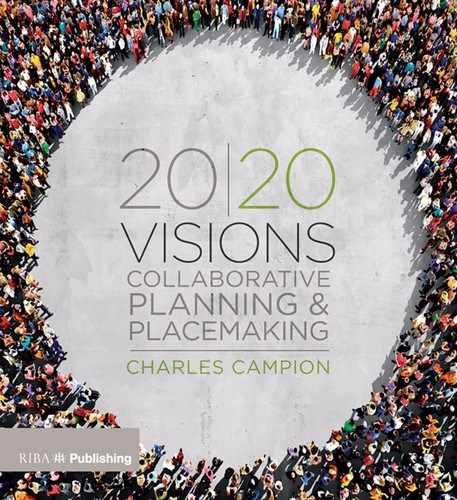Preface
I am always thoughtful when I walk through the doors of my local polling station to vote in a referendum or election. I think of my grandfather who fought in the First World War, and I think of my daughters and the world that they will inherit. I am fortunate to live in a mature, representative democracy, and consider it my duty to vote – but voting alone is not enough. We should in my view also expect to be involved in creatively shaping our futures in far more direct and participatory ways to achieve better, more sustainable outcomes – and we must be given the opportunity so to do.
I became interested in architecture and cities through my mother’s encouragement to look around me and value my environment. My father taught me to respect and be respectful to others, whatever their background. Growing up in the 1960s and 1970s I noticed council housing tower blocks being erected that appeared ugly, with surrounding landscapes that quickly became degraded and threatening. Although people initially welcomed the new modern homes, these were not popular developments in the main, yet somehow they passed through the democratic planning system. Two or three decades later many of them were being demolished to make way for more traditional forms of housing.
I first became actively involved in my community when I noticed a new building in my town centre that jarred – I couldn’t understand why the designers had chosen bricks that wilfully ignored the colour palette of the rest of the village. I joined the local residents’ association to try to make a difference.
Then, in 1989, I started at Huddersfield School of Architecture. During my final year of the Architectural Studies (International) degree course we went on an epic field trip to India, and were given a site for our final degree project in a village near Delhi called Begumpur. I didn’t know what urban design was at the time, but it seemed obvious to me that we should gain a greater understanding of the village context, and that included sitting down and talking with the local community.
When our group returned to the studio at Huddersfield, we intuitively drew up a series of analytical drawings. These were extremely important in our understanding of the community, the site and its context. Unfortunately, we discovered that there was no scope in the project mark scheme for credits to be attributed to what was an excellent piece of collaborative work. The three years degree was broad based and well delivered, but the thrust of architectural training it seemed was for students to solo-design object buildings with little reference to the community and context in which they would be sited.
On to Oxford Brookes University for two years’ further study, and in the second year I signed up for the Urban Design Diploma. This was a gamechanger, a life changer. Lecture one was given by Ian Bentley, and from the first word it all made sense to me: urban design – transport, contextual buildings, streets and spaces, landscape and water, and COMMUNITY and ECONOMY. Tracing back from Jane Jacobs’s The Death and Life of Great American Cities and on through to Responsive Environments by Bentley, Alcock, Murrain, McGlynn and Smith, efforts were clearly being made to rediscover the lost art of designing towns and cities around the needs and aspirations of local people and communities.
I began working in London with John Thompson & Partners (now JTP) in 1996 and was quickly immersed in collaborative placemaking through Community Planning Weekend (aka charrette) processes. One of the practice’s core beliefs is that ‘sustainable development is best achieved if the knowledge and commitment of local communities is engaged at every stage of the process’. Twenty-one years on and I have been involved in hundreds of participatory processes of various scales and types, both at home in the UK and internationally. I have seen again and again that involving people can break
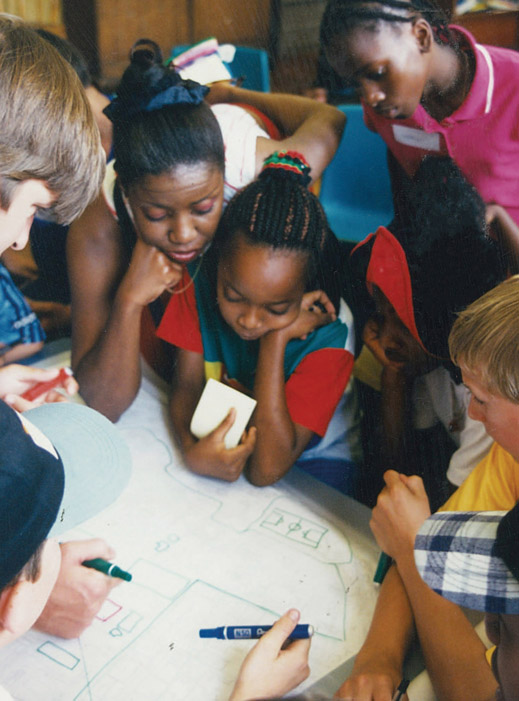
Figure 0.1:
South Acton Estate Community Planning Weekend, London, England, 1997
Figure 0.2:
Shahama and Bahia charrette, Abu Dhabi, UAE, 2006
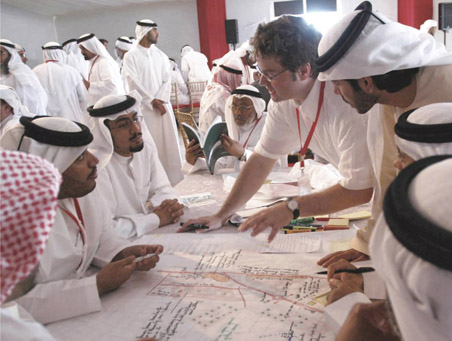
Figure 0.3:
Tanjung Ringgit EcoRegion™ workshops, Lombok, Indonesia, 2011
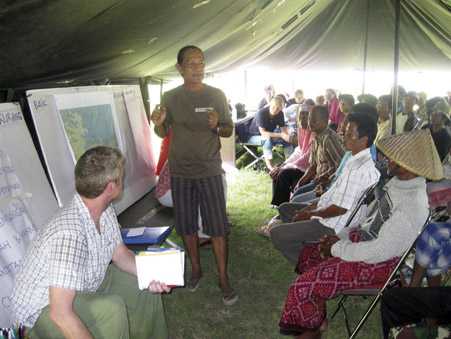
Figure 0.4:
Transport for Future Urban Growth Charrette, Auckland, New Zealand, 2016

down barriers, build community capacity, accelerate the decision-making process and lead to better, more sustainable places.
However, through my professional practice and in talking to numerous people when researching the case studies for this book, I have become aware that most people simply have no idea that there is a tried-and-tested methodology which could give them the opportunity to participate meaningfully in the planning of projects in their communities.
My aims in writing this book are threefold. First, I want people, politicians and professionals to know that there is an established methodology, the charrette, through which planning and placemaking professionals can work collaboratively with communities to bring mutual benefit. Second, I hope to inspire individuals and communities to demand the opportunity to participate in shaping plans and strategies for their areas to bring positive and lasting impacts to their own lives and those of future generations. And third, I hope that such participation becomes more commonly used to build consensus and create more innovative, sustainable and supported outcomes, tailored to each and every community, wherever they may be.
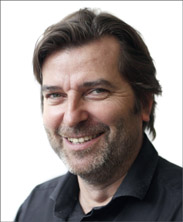
CHARLES CAMPION
RIBA AoU
2018
www.2020visionsbook.com
